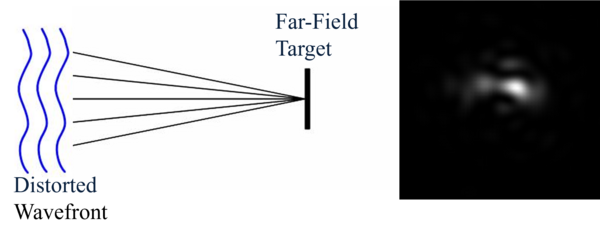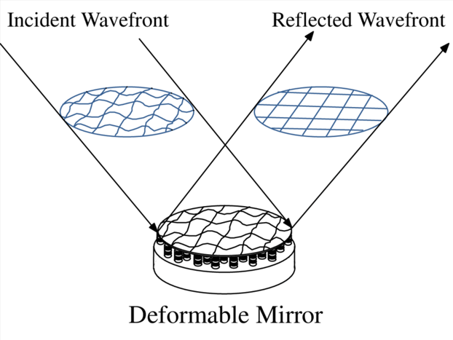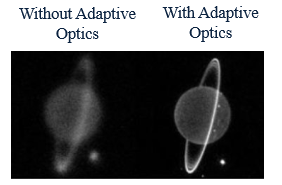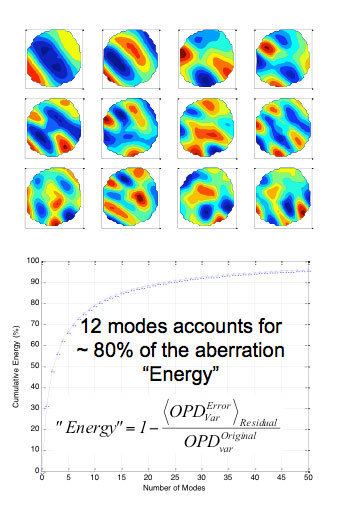Adaptive Optics and Beam Correction Systems
There are two main categories of aberration on a beam:

Tip/tilt
- results from structures larger than the beam
- causes the beam to deflect off target
- corrected using Fast Steering Mirror (FSM)

Higher order disturbances
- result from structures smaller than the beam
- cause the beam to spread
- corrected using Deformable Mirror (DM)
To correct these aberrations we can use a beam control system which typically consists of a fast-steering mirror and a deformable mirror. The fast steering mirror allows us to cancel out tip/tilt and move the beam back to the desired target, while the deformable mirror allows us to precorrect by putting an inverted aberration onto the beam so that it becomes unaberrated as it passes through the turbulence. For a beam this means the beam will focus nicely to a point. For imaging, this will deblur the image.
Our lab has this capability and tests ways to improve these systems. A large part of making these systems work is being able to accurate measure the beams wavefront which feeds back into the control loop. See wavefront sensing to learn more about this.
Neural network based predictive adaptive optics
A closed-loop adaptive optics system may not be fast enough to handle aberrations in applications such as high-speed flows. In this case a predictive feed-forward component must be added.
Through modal analysis it was found that twelve POD modes account for ~80% of the aberration of energy. Using the predictive method allows us to make use of previous eigenvalues of POD modes to predict future eigenvalves at some latency time.
To demonstrate this process, we used a neural network as a prediction method on the AAOL wavefront data at a viewing angle of 120 degrees, at a WFS frame rate of 25 kHz.
The neural network approach was able to predict rapid changes in the eigenvalues with a 200 microsecond latency using only four previous eigenvalue windows.
We have conducted a number of high-fidelity simulation activities at a variety of elevation angles and flow fields.


 Heidi B. Hammel and Imke de Pater
Heidi B. Hammel and Imke de Pater